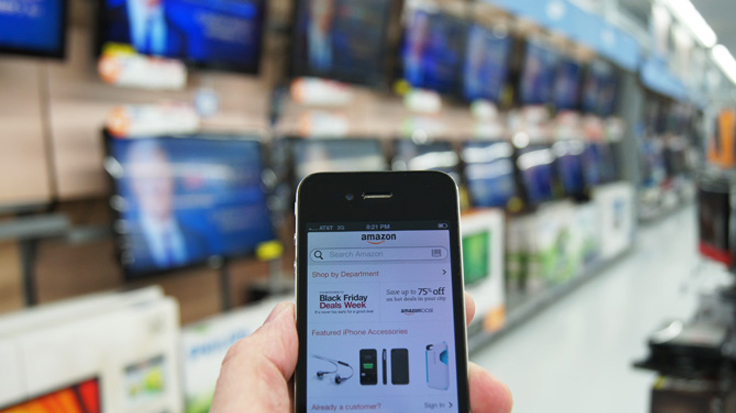Showrooming: An Evolutionary Trend in Retail
 Showrooming is a common trend in today’s retail industry.
Showrooming is a common trend in today’s retail industry.
A lot of us have done it, and for good reasons. Imagine yourself venturing into a store in search of a much-needed product, only to quickly learn (via mobile or by other means) the same product is available at another retailer or online for cheaper. With this realization, you might quickly vacate the premises thinking you’ll save a few bucks at your next stop (or online adventure).
I was 100% guilty of this whimsy when I was hunting for a new TV a couple of years ago. I won’t tell you how old my TV at the time was, but let’s just say it was fully compatible with a Super Nintendo and weighed about the same as my oven. I found myself at my local big box electronic provider and had a brand new Samsung 42-inch plasma TV all picked out and ready to be delivered. I suddenly realized I might as well browse some other price options with my trusty smartphone and found an LG with similar specs for cheaper at a nearby mom and pop retailer. I was so excited, I almost left through the emergency exit and set off the store alarm.
Retail has definitely evolved over the years due to ever expanding tech innovations. It was only a matter of time before the Internet made its union with the mobile phone, thus changing the way we go about our day. Considering the ubiquity of smartphones today, it only makes sense for traditional brick and mortar retailers to start embracing mobile technology to complement their business strategies.
Now, this is easier said than done. More and more brands are deciding to jump on the mobile bandwagon only to burn some bridges with existing customers due to a poor mobile experience. If a company’s mobile app is slow, buggy, and riddled with untargeted ads, they might have a hard time winning back their mobile shoppers once they’ve resolved the issues. After all, studies have shown that today’s consumers have high expectations for a brand’s mobile experience.
A new strategy should not simply be adopted just because your competition is doing so. Your mobile strategy is no exception and should reflect your brand’s core visions and values. Your mobile adoption should make sense for your company and your customers.
Research has shown that over 60% of shoppers would leave a store and buy online for price just 20% lower. Price matching is one approach retailers such as Target are using inside their stores in hopes of keeping customers happy and shopping. Other research has revealed that nearly three quarters of shoppers wish retailers would embrace modern technology to enhance the in-store experience.
The looming threat of showrooming is undoubtedly a challenge brick and mortar retailers face in today’s mobile driven world, and they must start thinking outside the box to enhance their customer’s in-store experience. Loyalty programs, SMS coupons, mobile sites and apps, QR codes, and interactive augmented experiences are just some options that exist today.
I believe brands need to focus on a strategy that their target consumers will connect with and understand. Leveraging technology with an emphasis on providing a seamless customer experience is key and will give brands the competitive edge they need to help battle the showrooming trend.




